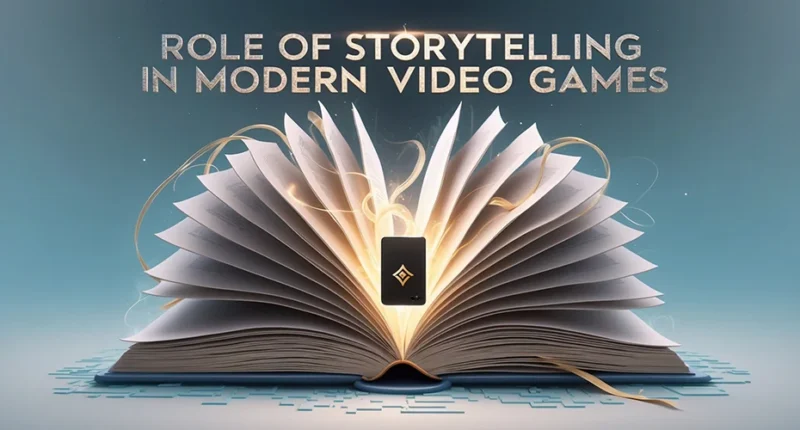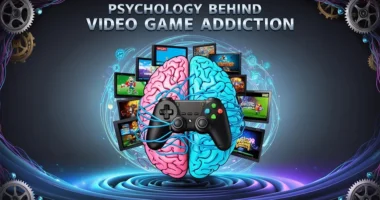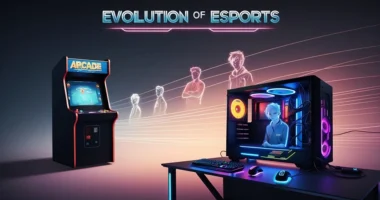Table of Contents
Storytelling has always been a crucial part of entertainment, from books and movies to plays and television. In the world of video games, storytelling has evolved to become one of the most important aspects of the experience. Today, players don’t just play a game for the mechanics or the challenges—they play to experience a story, become immersed in different worlds, and connect with characters. Here’s a closer look at how storytelling has shaped modern video games and why it matters.
Creating Emotional Connections
In the past, many video games were simple—players focused mainly on defeating enemies or reaching a goal. But as technology has advanced, games have become much more complex, and so has the storytelling. Game developers now craft intricate narratives that give players a sense of purpose and emotional engagement.
Think about games like The Last of Us or Red Dead Redemption 2. These games don’t just have players completing missions or fighting battles; they also tell deep, emotional stories about survival, love, sacrifice, and personal growth. Players connect with the characters, feel their struggles, and care about the outcomes. This emotional bond makes the experience of playing these games so much more meaningful.
Interactive Storytelling
One of the unique aspects of storytelling in video games is that players are active participants. Unlike a movie or book, where the story is fixed, video games let players make decisions that affect how the story unfolds. This interactive form of storytelling is powerful because it allows players to feel in control of the narrative.
In games like Mass Effect or Detroit: Become Human, players’ choices can change the direction of the plot. Characters can live or die based on decisions made throughout the game, and this sense of agency makes players feel more involved in the world. The stakes are personal, and the consequences of their actions are often felt throughout the game.
Building Immersive Worlds
Storytelling in modern video games also goes beyond just the characters and plot; it’s about the world players get to explore. Game developers create entire worlds with their own histories, cultures, and ecosystems. These details help make the story feel richer and more real.
Games like The Elder Scrolls V: Skyrim or The Witcher 3: Wild Hunt are perfect examples of how a game world can be brought to life through storytelling. Every corner of the world has a story to tell, from the NPCs (non-playable characters) players meet to the hidden locations they discover. The more immersive the world, the more invested players become in the story, making them want to explore every part of it.
Character Development
Just as in books or movies, well-developed characters are essential to a strong story. In modern video games, characters are not only central to the plot, but they also evolve over time, just like real people.
Games like God of War (2018) have taken character development to the next level. In this game, the main character, Kratos, is not the same person he was in earlier games. He’s dealing with his past while trying to be a better father to his son, Atreus. This development is reflected not just in the story but in the way players experience the game. Through dialogue, actions, and gameplay, players see Kratos grow, and that’s what makes his journey so compelling.
Storytelling Through Gameplay
Storytelling in video games isn’t just about what’s said or what’s shown—it’s also about how the gameplay itself tells a story. In modern games, developers often use gameplay mechanics to communicate themes and emotions without relying heavily on dialogue.
For instance, in Journey, a game where players explore a vast desert alone, the storytelling is done through the player’s actions, environment, and music, rather than through words. The simple act of traveling through a barren desert can communicate feelings of loneliness or hope. Games like Inside and Celeste also use gameplay mechanics to tell their stories. The way players interact with the game world is a key part of experiencing the narrative.
Expanding Storytelling Across Platforms
Video game storytelling has also expanded beyond the screen. Many game stories now have spin-offs, comics, books, and even TV shows. These spin-off stories help build on the worlds and characters that players love, allowing them to continue the experience beyond the game itself.
Take The Witcher series, for example. While it started as a video game, it grew into a book series, a TV show, and a rich universe full of stories. This type of expanded storytelling allows players to dive deeper into the lore and history of their favorite games.
The Future of Storytelling in Video Games
As technology continues to improve, so too will the ways in which video games tell stories. Virtual reality (VR) and augmented reality (AR) could make the experience even more immersive, allowing players to interact with stories in completely new ways. Games could become even more personalized, with artificial intelligence creating unique experiences for every player based on their actions and choices.
As games continue to evolve, storytelling will only become more integral to the experience. Players are no longer just looking for a fun distraction; they want to engage with stories that are deep, meaningful, and memorable.
Conclusion
Storytelling is one of the key elements that make modern video games so special. It allows players to connect with characters, explore immersive worlds, and influence the narrative. Whether it’s through emotional connections, interactive choices, or gameplay itself, storytelling has transformed video games from simple entertainment into powerful storytelling mediums. As technology continues to advance, we can only imagine how stories in games will evolve, but one thing is certain: storytelling will remain at the heart of video games for years to come.











